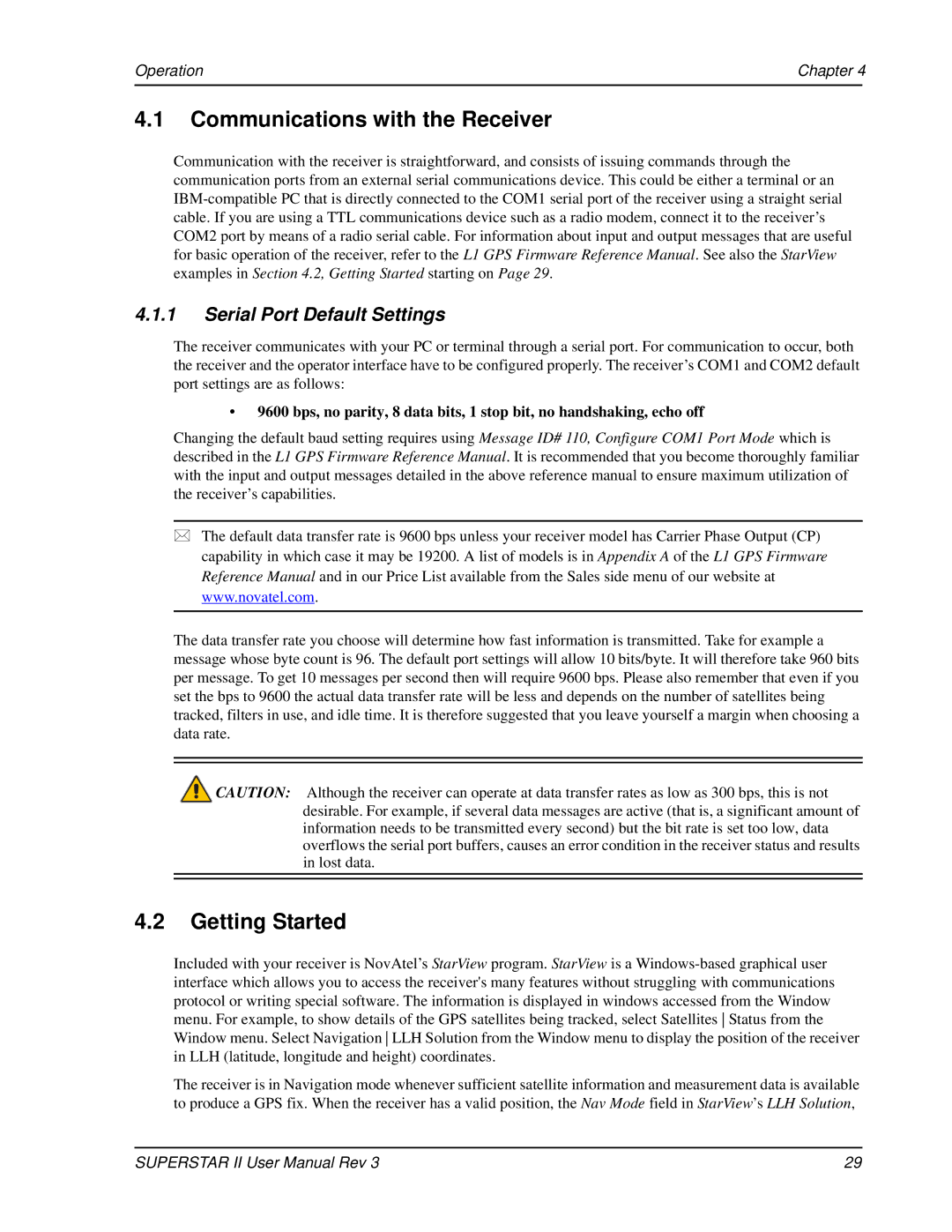
Operation | Chapter 4 | |
|
|
|
4.1Communications with the Receiver
Communication with the receiver is straightforward, and consists of issuing commands through the communication ports from an external serial communications device. This could be either a terminal or an
4.1.1Serial Port Default Settings
The receiver communicates with your PC or terminal through a serial port. For communication to occur, both the receiver and the operator interface have to be configured properly. The receiver’s COM1 and COM2 default port settings are as follows:
•9600 bps, no parity, 8 data bits, 1 stop bit, no handshaking, echo off
Changing the default baud setting requires using Message ID# 110, Configure COM1 Port Mode which is described in the L1 GPS Firmware Reference Manual. It is recommended that you become thoroughly familiar with the input and output messages detailed in the above reference manual to ensure maximum utilization of the receiver’s capabilities.
The default data transfer rate is 9600 bps unless your receiver model has Carrier Phase Output (CP) capability in which case it may be 19200. A list of models is in Appendix A of the L1 GPS Firmware Reference Manual and in our Price List available from the Sales side menu of our website at www.novatel.com.
The data transfer rate you choose will determine how fast information is transmitted. Take for example a message whose byte count is 96. The default port settings will allow 10 bits/byte. It will therefore take 960 bits per message. To get 10 messages per second then will require 9600 bps. Please also remember that even if you set the bps to 9600 the actual data transfer rate will be less and depends on the number of satellites being tracked, filters in use, and idle time. It is therefore suggested that you leave yourself a margin when choosing a data rate.
![]() CAUTION: Although the receiver can operate at data transfer rates as low as 300 bps, this is not desirable. For example, if several data messages are active (that is, a significant amount of information needs to be transmitted every second) but the bit rate is set too low, data overflows the serial port buffers, causes an error condition in the receiver status and results in lost data.
CAUTION: Although the receiver can operate at data transfer rates as low as 300 bps, this is not desirable. For example, if several data messages are active (that is, a significant amount of information needs to be transmitted every second) but the bit rate is set too low, data overflows the serial port buffers, causes an error condition in the receiver status and results in lost data.
4.2Getting Started
Included with your receiver is NovAtel’s StarView program. StarView is a
The receiver is in Navigation mode whenever sufficient satellite information and measurement data is available to produce a GPS fix. When the receiver has a valid position, the Nav Mode field in StarView’s LLH Solution,
SUPERSTAR II User Manual Rev 3 | 29 |
